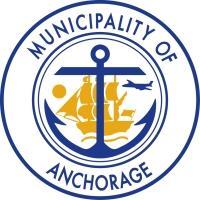Mayor LaFrance proposes rehabilitation incentives to turn vacant homes into housing
August 07, 2025

Mayor Suzanne LaFrance has proposed an ordinance to incentivize the rehabilitation of vacant and abandoned residential properties in Anchorage – a key priority under the Mayor’s 10,000 Homes in 10 Years Strategy.
The measure, AO 2025-84, would provide a 10-year property tax break to qualifying property owners who invest at least 15% of a building’s assessed value in health and safety repairs and improvements. To qualify, residential properties must have been constructed prior to 1996 and be listed on the Municipality’s Vacant and Abandoned (V&A) Buildings Registry.
“A restored property can provide a much-needed home for someone,” said Mayor LaFrance. “At a time when housing is expensive and hard to find, it makes no sense to have our housing stock sitting vacant and suffering from neglect. This policy is an opportunity to repair these homes and bring them back onto the market.”
Addressing vacant properties creates more housing opportunities – and it also removes health and safety risks from our neighborhoods. Vacant buildings often become targets for arson and illegal activity. This negatively affects quality of life and decreases property values in their neighborhoods.
While property owners would receive a tax break for completing renovations, any shift in the tax burden would be negligible. The amount of value to be exempted from these properties (which typically have a low taxable value) is below the threshold for increasing the mill levy. Rehabilitating these properties will add value to the property tax base in the long term.
Creating an incentive that prioritizes maximizing the value of existing properties while resolving health and safety risks is a win-win for everyone in the Municipality of Anchorage.
The Municipal Vacant & Abandoned Registry currently lists about 180 residential properties, including single- and multi-family homes. (The list also includes commercial properties, which are not eligible for this incentive.)
Residential properties on the V&A registry are older on average than Anchorage’s overall housing stock, with almost 80% of them built prior to 1980. This means they exhibit a higher degree of deterioration and require significant investment to be made habitable. Many have stood vacant for years.
Municipal Code Abatement officers identify properties on the list mostly during investigations of nuisance complaints or visible deterioration, but owners may also self-report. Inclusion on the registry requires that a property has been lawfully uninhabited for at least 180 days, along with other requirements.
AO 2025-84 is on the agenda for discussion at the next meeting of the Community and Economic Development Committee on Thursday, August 7, and is scheduled for a public hearing at the August 12 meeting of the Anchorage Assembly.
Contact:
Emily Goodykoontz
emily.goodykoontz@anchorageak.gov, (907) 205-6683
